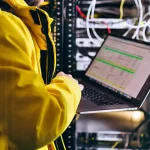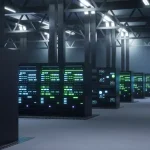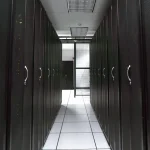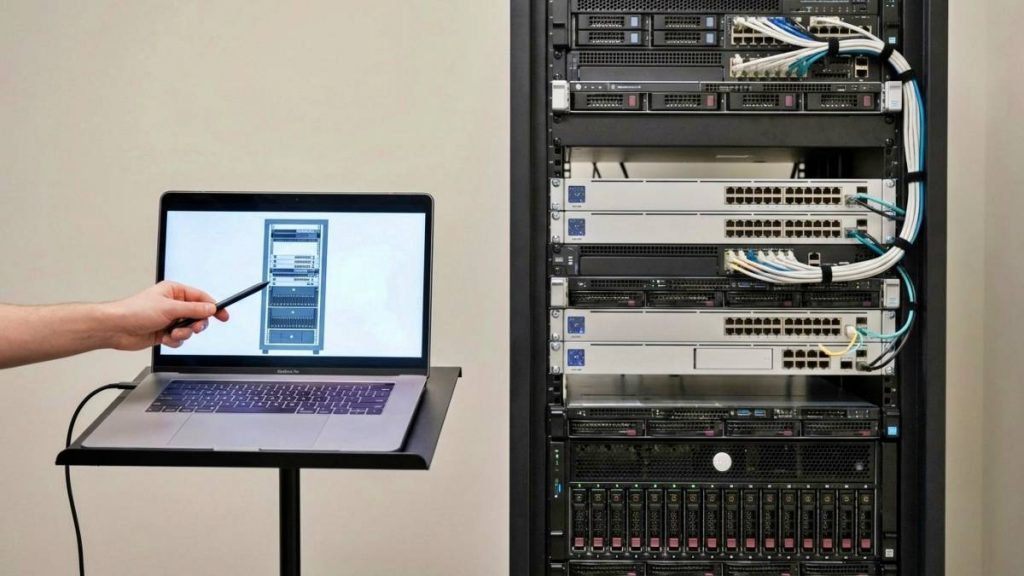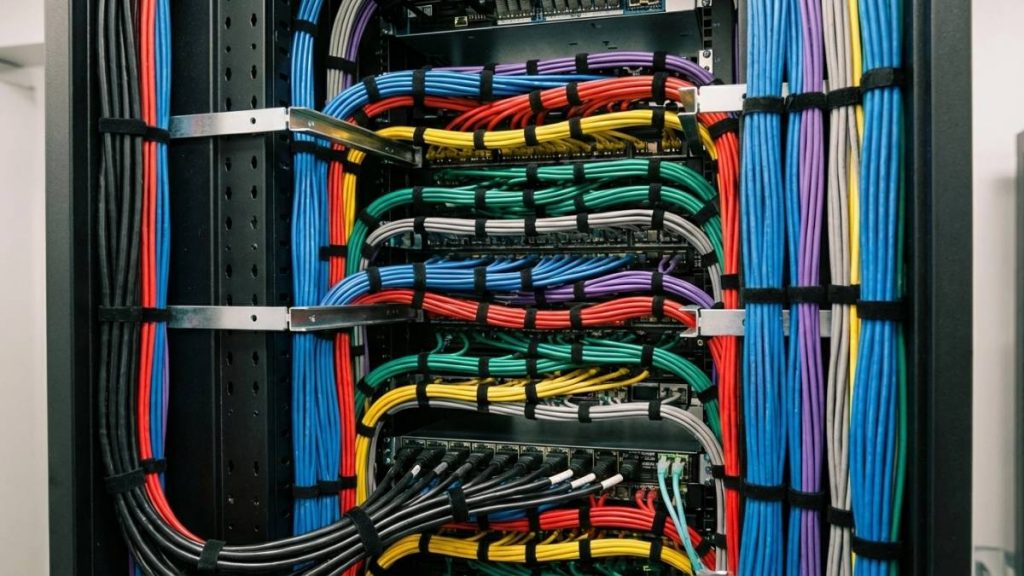Uptime is a vital consideration for any modern business relying on digital infrastructure. When systems go down, companies risk losing revenue, frustrating customers, and damaging their reputation. This makes uptime—the continuous operation and availability of IT services—a critical metric for any business’s success. While some companies opt to self-host servers in office server rooms, this approach often lacks the robust infrastructure for sustained uptime. In contrast, data centers offer dedicated resources and specialized services to deliver reliable operations. Here’s how data centers prioritize uptime through built-in redundancies, comprehensive monitoring, and rapid response, making them the smarter choice for businesses seeking dependable hardware-based IT infrastructure.

The Business Impact of Uptime
Uptime is more than just a technical measure; it directly affects a business’s ability to serve its clients, retain its workforce’s productivity, and maintain profitability. Studies show that even brief periods of downtime can cost companies hundreds to thousands of dollars per hour. For businesses that operate with e-commerce, remote teams, or high data availability needs, the cost of downtime can be even more severe. Beyond financial impact, consistent uptime fosters customer trust and employee efficiency, as it enables uninterrupted access to systems, data, and applications.
Key Factors of Uptime in Data Centers
To ensure continuous availability, data centers incorporate several key elements that distinguish them from in-office server setups: redundant power, network, and cooling systems, coupled with 24/7 monitoring and rapid response capabilities. Let’s explore how these features work together to maximize uptime.
Redundant Power Systems: Preventing Outages Before They Happen
Power stability is a fundamental requirement for IT infrastructure. A sudden power loss in self-hosted setups can result in data loss, server crashes, and prolonged recovery times, putting critical operations on hold. Data centers, however, go to great lengths to mitigate this risk through sophisticated power redundancy measures.
- Dual A/B Power Feeds: Many data centers offer A/B power feeds, providing independent power sources to power dual-source equipment. This allows critical systems to draw from two separate electrical feeds simultaneously, offering a safeguard if one feed experiences issues. If the primary power line encounters a problem, the secondary line seamlessly takes over, maintaining uninterrupted power and preventing the need for a manual failover process.
- Uninterruptible Power Supplies (UPS): In case of a power grid failure, data centers are equipped with UPS systems to bridge the gap between the power outage and backup generator activation. UPS units instantly deliver temporary power to prevent sudden shutdowns, allowing servers and other equipment to remain operational until the generator starts.
- Backup Generators: Data centers also use industrial-grade backup generators that can power the facility for extended periods during prolonged outages. These generators ensure that even in the case of a major power grid failure, business operations continue with minimal to no downtime.
These multi-layered power redundancies—A/B feeds, UPS, and backup generators—collectively offer a robust solution that minimizes the risk of power-related downtime, a level of resiliency rarely possible in a typical office environment.
Network Redundancy: Ensuring Always-Available Connectivity
Network connectivity is just as critical as power. In an office setting, IT systems often rely on a single Internet Service Provider (ISP) or connection, leaving them vulnerable to connectivity disruptions. Data centers, on the other hand, have redundant network infrastructures designed to keep data flowing and connections stable.
- Dual Uplink Connections with Failover Redundancy: Data centers can provide dual uplink connections to support failover redundancy. This setup includes connections from multiple ISPs and utilizes diverse physical routing paths. If one connection experiences issues or downtime, data traffic is automatically rerouted to the secondary uplink. This dual-connection approach protects against single points of failure on the client side and ensures seamless connectivity.
- Diverse Physical Network Paths: Network redundancy extends beyond dual uplinks. Many data centers have physically diverse network routes—multiple fiber lines that take different geographic paths. This physical diversity protects against disruptions from events like fiber cuts, power outages at ISP facilities, or natural disasters affecting a single area.
- Multi-homed Bandwidth, Load Balancing, and Intelligent Routing: Data centers also deploy advanced routing and load-balancing technologies to distribute traffic across multiple network connections evenly. This proactive distribution improves network efficiency and prevents any single connection from becoming overwhelmed. Data centers can typically provide clients with a blended, balanced connectivity solution over a single copper or fiber connection, offering resiliency and convenience.
These features provide a level of network redundancy that keeps data accessible and operations running smoothly, even if a primary connection experiences problems—benefits that are difficult to achieve with self-hosted servers in an office setting.
Cooling Redundancy: Protecting Equipment from Overheating
Overheating is one of the most common risks to servers and other IT equipment. In-office setups often rely on standard HVAC systems, which are not designed to handle server equipment’s cooling and climate control demands. Data centers, by contrast, use specialized cooling systems to maintain optimal temperatures.
- Redundant Cooling Units: Data centers deploy multiple cooling units with automatic switchover capabilities. If one cooling unit fails, a backup unit instantly activates to maintain a stable temperature. This redundancy protects equipment from overheating and reduces the risk of hardware damage or system crashes.
- Advanced Climate Control Systems: Many data centers utilize precision climate control technology to monitor and adjust cooling and relative humidity in real time. These systems monitor temperature and humidity levels across the facility and automatically make adjustments to keep conditions optimal.
- Hot and Cold Aisle Containment: Data centers often employ hot and cold aisle containment systems to optimize cooling efficiency. This setup organizes equipment in aisles and uses barriers to direct cool air only where it is needed, effectively managing airflow and preventing hotspots.
By ensuring proper cooling, data centers prevent equipment overheating, which is a significant factor in reducing downtime and prolonging the life of IT hardware.
24/7 Monitoring and Rapid Response: Staying One Step Ahead of Downtime
Data centers rely on proactive monitoring and rapid response protocols to ensure uptime. Unlike office setups, which may only get checked during working hours, data centers monitor infrastructure continuously and employ trained staff to address issues at any hour.
- Continuous Infrastructure Monitoring: Data centers use sophisticated software to monitor real-time power, network, and environmental factors. Sensors and alerts are set up to detect any unusual activity, from a spike in temperature to fluctuations in power flow, triggering immediate alerts to the operations team.
- Immediate Response Teams: Data centers have dedicated technicians on-site 24/7 to respond to issues as soon as they arise. If a server, power line, or network connection requires immediate attention, these specialists are ready to act. This rapid response capability is a critical advantage that office-based setups typically cannot offer without hiring full-time, around-the-clock IT staff.
- Remote Management Tools: Many data centers also provide clients with remote management tools, allowing businesses to access and control their servers as needed. This adds additional flexibility and control, even from offsite locations.
Why Data Centers Are the Smart Choice Over Office-Based Hosting
While sometimes more affordable initially, office-based server setups lack the comprehensive redundancy, cooling, monitoring, and rapid response features that data centers offer. Without these protections, businesses face a significantly higher risk of downtime from power failures, network issues, and cooling challenges. Additionally, any disruption that occurs outside of office hours may not be addressed immediately, prolonging the impact on business operations.
By choosing data center hosting, businesses gain access to an environment designed specifically to keep IT systems operational. With robust redundancies, continuous monitoring, and a team of skilled technicians available around the clock, data centers provide peace of mind that IT infrastructure will be available when needed.
Maximizing Uptime with Datacate
Datacate understands that uptime is essential to business continuity. Our data centers are equipped with redundant power, network, and cooling systems, combined with round-the-clock monitoring and an experienced support team to ensure that your systems stay online. With Datacate, you gain more than just space for your servers; you gain a commitment to the reliability and performance of your IT infrastructure.
Protect your business from costly downtime—contact Datacate today to learn how our data center solutions can help you achieve reliable, uninterrupted operations.

